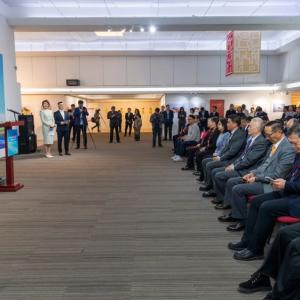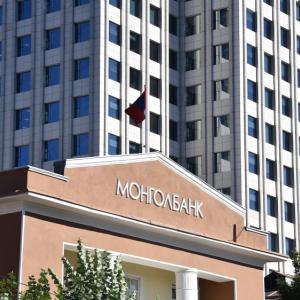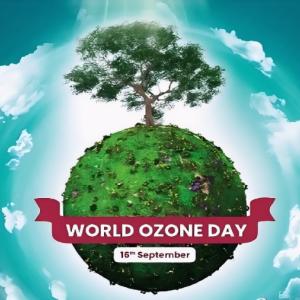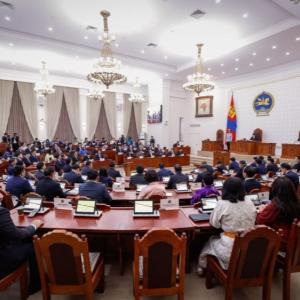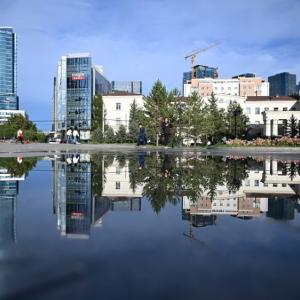MONGOLIA IN 2020
The Mongol Messenger
Ulaanbaatar /MONTSAME/. MONTSAME National News Agency names the top 10 events in Mongolia for 2020.
1.Mongolia also affected by COVID-19

Aimed to contain COVID-19 spread, Mongolia has introduced for the first time a strict lockdown nationwide, with a performance of 97 percent in Ulaanbaatar city.
Mongolia’s first imported case of COVID-19 - a French man, who arrived from abroad, was reported in March. Before the record of its first imported case, or since the outbreak was reported in China, Mongolia instituted early measures in combating COVID-19. THe country had closed its borders and restricted its public activities, resulting in no detections of local transmission for ten months.
The first local transmission case was recorded on November 11 after a driver of international freight who had completed his 21-day quarantine, and his family members tested positive. From that day on, the country went into a strict lockdown. As the outbreak was reduced to a certain extent, the strict lockdown was gradually lifted from December 19 to the heightened state of readiness.
In consideration of disruptions in livelihoods and businesses, the GOvernment decided to exempt households and some enterprises from electricity, heat, water, and waste fees for seven months, from December 1, 2020 to July 1, 2021.
During the COVID-19 pandemic, Mongolia has repatriated about 21,000 citizens from over 80 countries by charter flights.
2.Visits amid the pandemic

President Kh.Battulga paid a visit to China on February 27 amid the COVID-19 outbreak, becoming the first Head of State to visit abroad during the pandemic. During the visit, the President met with his Chinese counterpart to exchange views on the response to the outbreak, and informed about Mongolia’s donation of 30,000 head of sheep to China, known internationally as Sheep Diplomacy.
The President’s visit was followed by visits of Mongolian Foreign Minister N.Enkhtaivan to the Russian Federation, and Chinese Foreign Minister Wang Yi and Japanese Foreign Minister Motegi Toshimitsu to Mongolia, respectively.
Within the framework of the official visit of State Councilor of the PRC and Minister of Foreign Affairs Wang Yi to Mongolia on September 15-16, a note on amendments to the intergovernmental agreement between Mongolia and China on Mongolia-China Border Ports and their regimes was exchanged, and bilateral cooperation documents were signed, namely an intergovernmental agreement on economic and technical cooperation, 2021- 2022 cooperation plan of the Mongolian and Chinese Ministries of Foreign Affairs and protocol on inspection and quarantine requirements for flour exports between Mongolia’s Professional Inspection Agency and China’s General Administration of Customs.
Amendments to the agreement on Mongolia-China Border Ports enabled the opening of three railway border ports in addition to Zamiin-Uud-Erlian railway border port, bringing impetus to the growth of exports and transit freight.
Mongolia’s Foreign Affairs Minister N.Enkhtaivan visited Russia on September 20-22. During the visit, Mongolian and Russian Foreign Ministers, N.Enkhtaivan and Sergey Lavrov exchanged a letter of ratification of the Treaty on Friendly Relations and Comprehensive Strategic Partnership between Mongolia and the Russian Federation, signed in 2019. The parties also agreed to advance the implementation of the Mongolia-RussiaChina Economic Corridor Program and accelerate the development of the feasibility study for the Power of Siberia-2 project.
During the official visit of the Foreign Affairs Minister of Japan on October 9, the sides signed the exchange note on providing an emergency support loan of JPY 25 billion (approximately USD 230 million), with an interest rate of 0.01 percent.
3.Election-2020: Rulers’ policy to be continued

Exercising their rights given by the Constitution to vote and to be elected, citizens of Mongolia elected their highest legislative body for the 8th time on June 24 this year.
With the result of the election, Mongolian People’s Party, current ruling party, received obligation from the people to continue their policies. Specifically, the result was a victory for the ruling Mongolian People's Party that won 62 of the 76 seats, with 11 seats for the Democratic Party, and each a seat for the candidate of ‘Our Coalition’ and former MP S.Ganbaatar and the candidate of ‘Right Person Electorate Coalition’ and Chairperson of the National Labor Party T.Dorjkhand. Former Prime Minister of Mongolia N.Altankhuyag also won a seat as an independent candidate.
Moreover, the local council elections for 21 aimags, the capital city, 330 soums and 9 districts were held nationwide on October 15. As a result, MPP won 34 out of the 45 seats of the capital city council and became majority in the local councils of 13 aimags. DP won in 8 aimags and 8 seats in the capital city. In addition, National Labor Party won 3 seats in the city council for the first time.
4.Archaeologists discover ruins of the Khunnu Empire capital

In June 2020, archaeological research team of the International University of Ulaanbaatar led by archaeologist T.Iderkhangai conducted excavations on the ruins of a city, located about 10 km southwest of Ulziit soum, Arkhangai aimag, and found a roof decoration with the inscription “Son of Heaven Chanyu”. Based on the findings, the area was announced as the ruins of Luut city, the capital of Khunnu (Xiongnu) Empire.
As a result of over a decade of research at the political center of the Khunnu Empire and locations of Khunnu-era burials in Orkhon, Tamir, Khanui and Khunui river basins, the team of 20 archaeologists led by T.Iderkhangai discovered the remains in 2017. The artifact was discovered in the progress of complex exploration and excavation.
Considering it is impossible for a palace of ordinary dignity to be decorated with the characters “Son of Heaven Chanyu”, we announced the discovery of the ruins of Luut city, archaeologist T.Iderkhangai highlights.
5.Mongolia’s Development Model - ‘Vision-2050’

The ‘Vision-2050’ long-term development policy of Mongolia was approved by the State Great Khural on May 13, 2020.
Some 1,500 researchers of government and NGOs, research institutes and universities were involved in developing this policy document defining the next 30 years of development for Mongolia. From the eight 5-year-plans developed by ‘Mongolor’ joint venture in 1914, Wealth Enrichment Department in 1924, and the State Planning Commission in 1945 to various sectoral development policies, over 500 policies were used to develop the document over the course of 8 months. In this sense, ‘Vision-2050’ is truly a ‘Mongolia’s development model’ bringing together the history of the Mongol Empire, nomadic culture, and unique national characteristics with the modern development ideology being followed internationally.
Common national value, human development, quality of life and middle class, the economy, good governance, green development, peace and security of the society, regional development, and Ulaanbaatar and satellite cities consisting of 9 goals and 47 objectives, ‘Vision-2050’ is divided into three phases: 2021-2030, 2031-2040, 2041-2050, with its implementing method and expected results carefully calculated by the Government.
The economy of Mongolia has been largely dependent on mining in the past. The situation is still the same even today, with the change in mining commodity prices having a direct impact. Thus, in the policy for the coming 30 years, it has been announced that the following sectors, fields and projects will be prioritized for the economy and supported through state policy.
1. Mega projects on value-added mining and its infrastructure to change the structure of the economy and resolve the issue of unstable growth,
2. Processing industry for heavy and light industries as well as food,
3. Energy sector,
4. Transport and logistics sector,
5. Different types of tourism and corresponding services, SMEs,
6. Knowledge based and creative economy.
Through such measures, it is estimated that GDP per capita will grow to USD 12,000 by 2030, and over USD 38,000 by 2050. Furthermore, it is planned that the country will also transition into a manufacturing, exporter country, reaching a level where Mongolia is fully capable of competing in the region of Asia and the Pacific.
6.Strategic partnership strengthens between Mongolia and the U.S.

On December 7, the U.S. House of Representatives approved a resolution reaffirming the strategic partnership between Mongolia and the United States of America.
The resolution highlighted the establishment of strategic partnership between the two countries, and the agreement to implement the Roadmap for Extended Economic Partnership in 2019, the Millennium Challenge Corporation’s 2nd compact agreement, transparency agreement, and cooperation in the defense sector.
Furthermore, it calls for the U.S. State Department, USAID, U.S. International Development Finance Corporation, and corresponding organizations to support the development and diversification of Mongolia’s economy, and women entrepreneurs running SMEs, boost trade between Mongolia and the U.S., and provide support in efforts being made in regards to democracy in Mongolia and fighting against corruption. Noting the importance of civil society in the development of democracy, it also calls for the side of Mongolia to continue to keep the free, fair, and trustworthy election system, to continue making legal reforms, to build institutional capacity, and to enhance their independence. Observers believe that the resolution will not only have an important role in developing the two countries’ relations, but also serve as a push in discussing the Mongolia Third Neighbor Trade Act legislative bill that has been introduced to the U.S. Congress.
7.Digital Mongolia

The Communications and Information Technology Authority introduced the E-Mongolia system, which offers 181 government services online, from November 2. The system is available through website and mobile application.
Citizens used to spend 30 minutes on average to get public services, but now it has become possible to spend only 5 minutes with the help of computers and mobile devices thanks to the new system. Further, 492 government services are planned to be transferred into the system. In this regard, the Parliamentary Standing Committee on Innovation and Online Policy is developing a package of bills on digital transition, including bills on the Protection of Information Safety and Data and Digital Use of Government.
With the digital transition of public services, around MNT 10 billion are estimated to be cut from paper-based filings and postal expenses.
8.Air pollution in Ulaanbaatar city reportedly reduced by 50 percent

In the winter of 2019-2020, air pollution declined by 50 percent in Ulaanbaatar, which is considered one of the cities with the most polluted air in the world.
By Resolution No.62 dated February 28, 2018, the Government decided to ban raw coal consumption in Ulaanbaatar starting from May 15, 2019, introducing refined coal briquette as replacement in order to reduce pollution.
1.2 million tons of raw coal was annually consumed by 220,000 ger district, causing 80 percent of the air pollution. With the introduction of refined coal produced by ‘Tavan Tolgoi Tulsh’ Company in the central six districts, the air pollution has dropped by half.
Moreover, the second refined coal briquette factory was put into operation on December 2, creating conditions to fully provide the city with refined coal. As the Government has also made a decision to sell refined coal at 75 percent discount, the air pollution in the capital city is expected to be reduced up to 80 percent.
9.The railway to put mining deposits into circulation, and support the economy

One of the main objectives reflected in ‘Vision-2050’-the development policy of Mongolia for the next 30 years is the development of the infrastructure sector, in which several projects are successfully being implemented. The construction of 414.6 km railway en route Zuunbayan-Tavantolgoi is one of the projects. And it has recently reached the 100 km mark, with Ulaanbaatar Railway JSC staff putting together the 4000th section on November 30 this year. Following its completion in 2022, it will create the opportunity to put the coal of Tavantolgoi as well as other deposits that are located in a 30 km radius into circulation, boosting the country’s economy.
Moreover, Mongolia-a country that became an oil producer 10 years ago, has advanced to the next level with the project on establishing an oil refinery and the start of its industrial complex construction. For the project, the First engineering– procurement–construction (EPC-1) agreement was signed in October this year.
10.Mongolia removed from FATF Grey List

On October 23, 2020, President of the Financial Action Task Force (FATF), Dr. Marcus Player announced that Mongolia has officially been removed from its grey list.
Mongolia was added to the FATF’s grey list in October 2019 after the country failed to pass the requirements to combat money laundering and terrorism financing crimes. As a result of specific measures taken by the Government, the country succeeded to be removed from the list within less than a year. Taking into account of Mongolia’s actions to change authorities of law enforcement agencies, and prompt resolution of financial crimes in court and the Parliamentary discussion of draft law on judicial reform, representatives of over 130 countries and international organizations took part in the FATF Plenary Meeting, unanimously supporting Mongolia’s removal from the list.

 Ulaanbaatar
Ulaanbaatar














